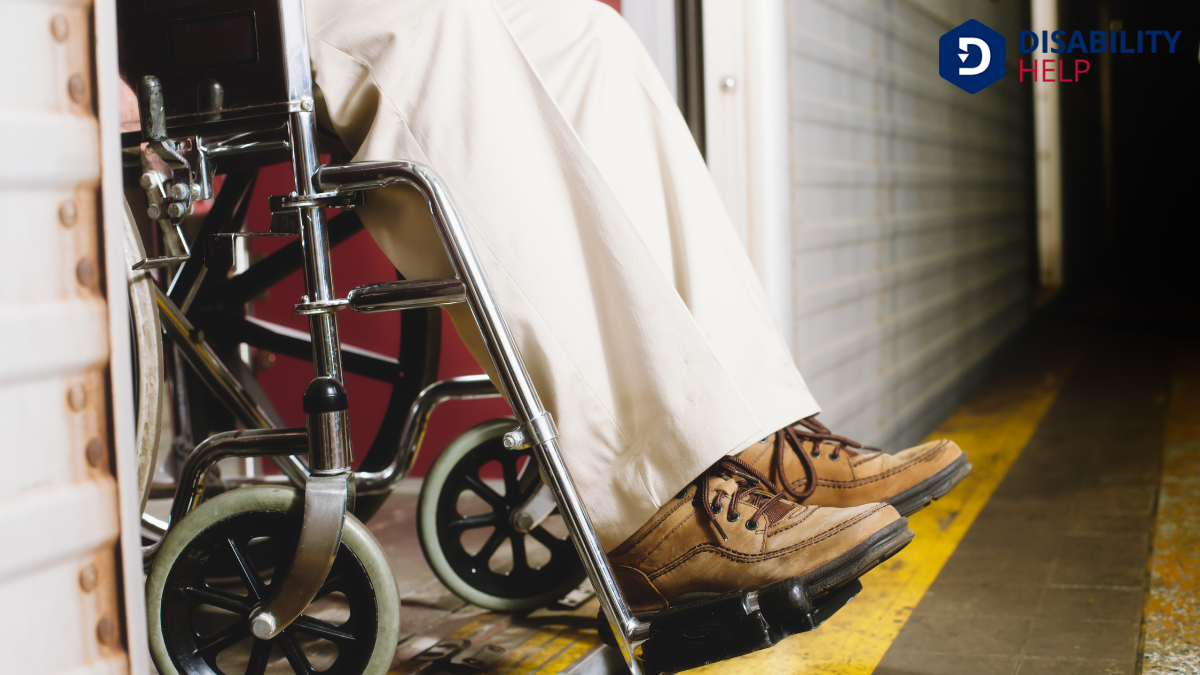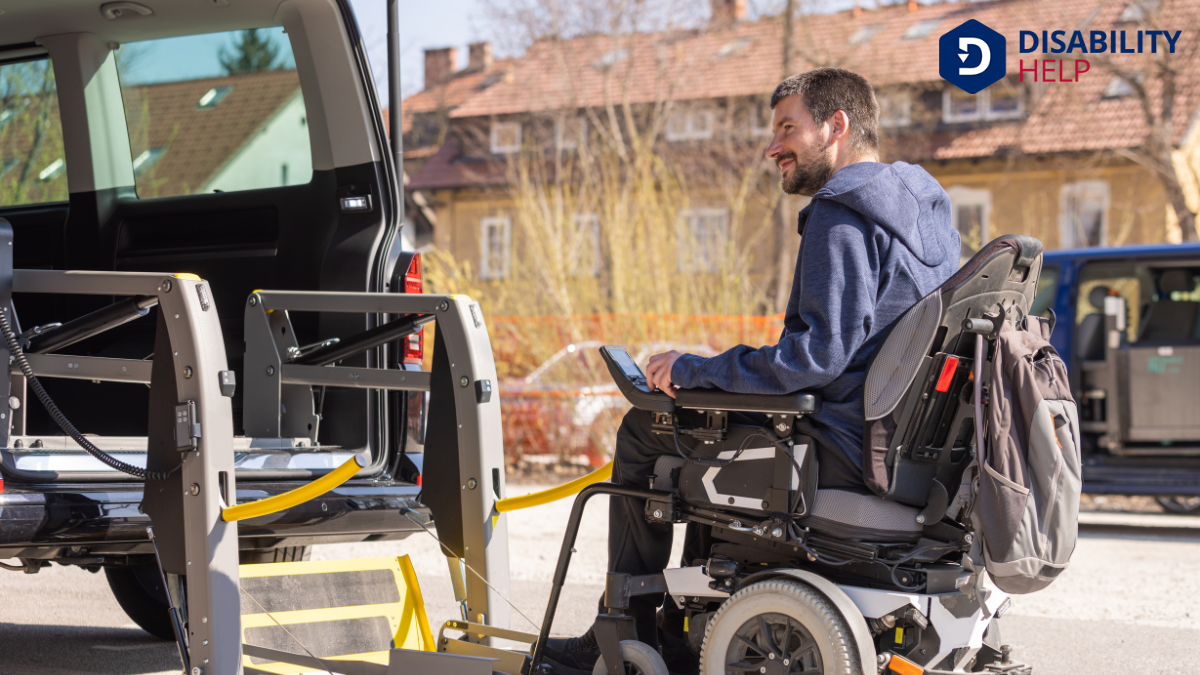When we discuss the accommodationsModifications or adjustments in healthcare settings to support patients with disabilities. required under the Americans with Disabilities Act (ADA)A U.S. law that prohibits discrimination against individuals with disabilities in all areas of publi..., it's clear that accessibilityThe design of products, devices, services, or environments to be usable by people with disabilities.... goes beyond simple ramps and wider doorways. We need to take into account effective communication services, adaptive technology, and flexible work arrangementsWork schedules that allow employees with disabilities to manage their health and job responsibilitie... that help eliminate barriers. By doing so, we guarantee equal opportunities for everyone. But how exactly do these accommodations transform daily experiences for individuals with disabilities? Let's explore the impact of these essential measures further.
Key Takeaways
- Buildings must have ramps, wider doorways, and elevators for mobility impairments.
- Sign language interpreters and captioning services enhance communication for individuals with hearing impairments.
- Websites should be compatible with screen readers to ensure digital accessibility.
- Service animals must be allowed in public areas to assist individuals with disabilities.
- Flexible work schedules accommodate medical appointments and individual employee needs.
Physical Modifications to Buildings
When it comes to ensuring accessibility, physical modifications to buildings are essential under the Americans with Disabilities Act (ADA). We need to reflect on the variety of changes that make spaces accessible to everyone.
Ramps, wider doorways, and elevators are vital in providing ease of movement for individuals with mobility impairments. Let's not forget about accessible restrooms, which require grab barsBars installed in bathrooms or other areas to provide support and prevent falls for those with mobil... and adequate space for wheelchairs.
Signage with braille and auditory signals is fundamental for those with visual impairments. We must also contemplate the importance of tactile paths for safe navigation.
These modifications aren't just about compliance; they're about creating inclusive environments where everyone feels welcome. By prioritizing these changes, we're taking significant steps towards a more accessible and equitable world for all.
Accessible Transportation Solutions

When it comes to accessible transportation, we need to focus on both wheelchair-accessible vehicles and modifications to public transport.
By ensuring these options are available, we can create a more inclusive environment for everyone.
Let’s explore how these solutions can transform mobility for individuals with disabilities.
Wheelchair-Accessible Vehicles
Steering through the world with ease and independence shouldn't be a luxury, which is why wheelchair-accessible vehicles are crucial for many individuals. They transform how we approach mobility, offering essential freedom and autonomy.
Let's explore key features that make these vehicles indispensable:
- Ramp Access: Ensuring easy entry and exit, ramps are pivotal for accessibility. These can be automatic or manual, depending on the user's preference and vehicle design.
- Spacious Interiors: Adequate space inside allows for comfortable maneuvering, accommodating both the wheelchair and other passengers.
- Securement Systems: Safety is paramount; specialized systems secure the wheelchair firmly in place during transit.
- Driver Controls: Some vehicles offer adaptive controls, enabling individuals with disabilities to drive independently.
These features make transportation more inclusive and dignified for everyone.
Public Transport Modifications
While wheelchair-accessible vehicles provide personal mobility solutions, public transport modifications broaden access to shared transportation systems.
We must guarantee that buses, trains, and other public transit options are inclusive and accessible to everyone. The ADA mandates features like low-floor buses, ramps, and priority seating to accommodate those with mobility challenges.
It’s important that transit operators maintain clear signage and audio announcements for those with visual or hearing impairments.
We should also recognize the role of training for transportation staff. They need to be aware of the diverse needs of passengers with disabilities and how best to assist them.
By fostering an understanding of these requirements, we can create a more inclusive and equitable public transportation experience for all.
Let's continue advocating for accessible transit solutions.
Effective Communication Accommodations
To guarantee everyone has equal accessThe principle that all individuals, including those with disabilities, should have equal opportunity...<access to informationThe right of individuals with disabilities to obtain and use information, often requiring accessible..., effective communication accommodations under the ADA are vital.
These accommodations guarantee that individuals with disabilities can fully participate in all aspects of society. When we think about what this entails, we must consider the following:
- Sign Language Interpreters: For those who are deaf or hard of hearing, interpreters are critical in facilitating clear communication.
- Captioning Services: Providing real-time captions during presentations or events helps those with hearing impairments understand spoken content.
- Accessible Digital Content: Websites and documents should be designed for screen readers to assist those with vision impairments.
- Written Materials: Offering materials in alternative formats, such as Braille or large print, guarantees accessibility for everyone.
Reasonable Modifications in Policies
As we explore reasonable modifications in policies under the ADA, it's essential to take into account how we can adjust our policies to guarantee everyone has access to our facilities.
This includes understanding the necessary changes to accommodate service animals and how these adjustments impact daily operations.
Let's examine how these policy modifications can help us create a more inclusive environment.
Policy Adjustments Required
Steering through the landscape of the Americans with Disabilities Act (ADA) requires us to understand the necessity of reasonable modifications in policies to confirm inclusivity.
We must make certain that our policies don’t inadvertently create barriers. Here’s how we can approach this:
- Review Policies: Regularly examine policies to identify potential obstacles for individuals with disabilities.
- Training Staff: Educate employees on ADA requirements and the importance of flexibility in policy application.
- Communication: Establish clear channels for individuals to request modifications and ensure that responses are timely.
- Feedback Mechanism: Implement a system to gather input from those affected by policies to refine and improve them.
Access to Facilities
Maneuvering the domain of access to facilities under the ADA, we must guarantee our buildings and spaces are welcoming to everyone. This involves making reasonable modifications in our policies to enhance accessibility.
For instance, if a policy inadvertently restricts access for individuals with disabilities, we should adjust it to promote inclusivity. Consider a policy requiring the use of stairs when an elevator isn't available—modifying this to provide alternative access guarantees compliance and compassion.
We need to evaluate our facilities continuously, guaranteeing features like ramps, wide doorways, and accessible restrooms are available.
It's about creating an environment where physical barriers are minimized. Let's work together to guarantee our spaces reflect the ADA's spirit, reinforcing the belief that everyone deserves equal opportunity to participate fully in society.
Service Animal Regulations
Creating an inclusive environment doesn't stop at physical modifications; it extends to our policies regarding service animals. Under the ADA, we must guarantee our procedures accommodate service animals, promoting accessibility and understanding.
Here’s how we can do this effectively:
- Access: Allow service animals in all areas where the public is permitted. They’re not pets, but essential aids.
- Inquiries: Limit questions to two: if the animal is required for a disability, and what tasks it’s trained to perform. Avoid asking for documentation.
- Behavior: If a service animalAn animal that is trained to perform tasks for the benefit of a person with a disability, protected ... is out of control or not housebroken, we can ask it to be removed, ensuring the handler knows they’re welcome without the animal.
- Fees: We can’t charge fees for service animals, even if we do for pets.
Adhering to these guidelines supports inclusivity and legal compliance.
Assistive Technology and Devices

Innovation plays an essential role in empowering individuals with disabilities, and assistive technology and devices exemplify this progress. These tools help us enhance accessibility and independence, allowing people to navigate daily challenges more effectively.
Under the ADA, we must guarantee that individuals with disabilities have access to necessary assistive technologies, such as screen readers for the visually impaired or communication devices for those with speech difficulties.
Let's consider how these technologies break barriers. A screen readerSoftware that reads aloud the text on a computer screen, used by individuals who are blind or visual..., for instance, enables users to access digital content by reading text aloud, fostering inclusionThe practice of creating environments in which any individual or group can be and feel welcomed, res....
Devices tailored to specific needs empower individuals, allowing them to engage fully with their environment. As we embrace these advancements, we guarantee a more inclusive society, honoring the ADA's commitment to equal opportunities for everyone.
Adaptive Equipment for Workplaces
When we consider the modern workplace, adaptive equipmentDevices that assist individuals with disabilities in performing ADLs, such as grab bars or shower ch... is essential for fostering an inclusive environment. By equipping our spaces to accommodate diverse needs, we enhance productivity and morale.
Here’s how adaptive equipment can make a difference:
- Ergonomic Chairs: Adjustable chairs help maintain posture and reduce strain, making long hours at a desk more comfortable.
- Height-Adjustable Desks: These desks cater to individuals who may need to alternate between sitting and standingThe legal right to bring a lawsuit, which requires that the individual bringing the suit has a direc..., improving accessibility and comfort.
- Screen Magnifiers: For those with visual impairments, screen magnifiers enhance screen visibility, allowing for more efficient work.
- Speech Recognition SoftwareSoftware that converts spoken words into text, aiding individuals with physical disabilities or lear...: This technology assists individuals who've difficulty typing, enabling them to interact with computers through voice commands.
Flexible Work Schedules and Leave Policies
How can we better support our diverse workforce? One key way is by offering flexible work schedules and leave policies. Under the ADA, we're required to evaluate adjustments that can help employees manage their disabilities without sacrificing job performance. This might mean allowing flexible hours to accommodate medical appointments or therapies.
It could also involve providing additional unpaid leave for health-related reasons beyond standard policies.
We need to approach each situation with empathyThe ability to understand and share the feelings of another, particularly important in understanding... and openness, understanding that a one-size-fits-all model doesn't work for everyone. By doing so, we foster an inclusive environment where all employees feel valued and empowered.
Let's prioritize dialogue with our team members to identify their needs and implement practical solutions that enhance productivity and well-being for everyone.
Service Animals and Support Animals

Addressing the needs of our diverse workforce doesn't stop at flexible schedules; it extends to recognizing the role of service animals and support animals in the workplace.
These animals provide critical assistance and emotional support to many employees. Here's what we need to understand:
- Service Animals: These are typically dogs trained to perform tasks for people with disabilities, such as guiding individuals who are blind.
- Support Animals: Unlike service animals, support animals offer emotional comfort rather than specific trained tasks.
- Legal Rights: Under the ADA, employees using service animals are protected, ensuring their inclusion in the workplace.
- Workplace Integration: It's vital to communicate openly and develop policies that accommodate these animals while considering other employees' needs.
Understanding these points fosters an inclusive environment.
Accessible Online and Digital Content
Making certain that our online and digital content is accessible is essential for an inclusive workplace.
We need to accommodate everyone, including individuals with disabilities, by making our content easily navigable. This means using alt text for images, providing captions for videos, and making certain that our websites are compatible with screen readers.
We must also consider color contrast and keyboard navigation to make certain all users can access our content without barriers.
Training and Awareness Programs for Staff
As we explore training and awareness programs for staff, it's essential to highlight the importance of disability training in fostering an inclusive workplace.
By enhancing our communication skills, we can better serve colleagues and clients with diverse needs.
Together, let's commit to practicing inclusive workplace behaviors that benefit everyone.
Importance of Disability Training
While it's easy to overlook, disability training plays an essential role in creating an inclusive workplace. By embracing this training, we foster an environment where everyone feels valued and respected.
Here are four key benefits of disability training:
- Increased Awareness: We learn about various disabilities, helping us understand the challenges faced by our colleagues.
- Improved Accessibility: Training equips us with the knowledge to identify and remove barriers, guaranteeing equal access for all.
- Enhanced Respect: It promotes empathy and respect, encouraging a workplace culture that appreciates diversityThe inclusion of individuals from a wide range of backgrounds, including people with disabilities..
- Legal Compliance: We guarantee our organization meets ADA requirements, avoiding potential legal issues.
Through these steps, we can transform our workplace into a supportive and inclusive community for everyone.
Enhancing Staff Communication Skills
Effective communication is the backbone of any thriving workplace, especially when we aim to create an inclusive environment.
We need to guarantee our staff are equipped with the skills to interact effectively with colleagues of all abilities. By implementing training and awareness programs, we can foster a culture where everyone feels heard and understood.
Let's focus on clear language, active listening, and empathy. These components help us break down barriers and prevent misunderstandings.
When we train our staff, we're not just teaching them to communicate; we're empowering them to build meaningful connections.
Our goal is to create a space where differences are celebrated and everyone is valued.
We can achieve this by continually enhancing our communication skills, assuring all voices are acknowledged and respected.
Inclusive Workplace Practices
Creating an inclusive workplace is more than a policy; it's an ongoing commitment that starts with thorough training and awareness programs for our staff.
By fostering a culture of understanding and respect, we guarantee everyone feels valued and included. Here's how we can make it happen:
- Educational Workshops: We need to provide regular training sessions that cover topics related to disabilities and inclusivity.
- Interactive Activities: Let's engage in role-playing and simulations to develop empathy and understanding among our team members.
- Open Dialogue: Encourage conversations by creating safe spaces where staff can discuss and learn about different experiences and perspectives.
- Continuous Feedback: Implement a system for staff to provide feedback on the inclusivity of our workplace, guaranteeing ongoing improvement.
Together, we can build a more inclusive environment.
Frequently Asked Questions
What Are the Legal Consequences for Failing to Provide ADA Accommodations?
If we don't provide ADA accommodations, we could face legal consequences like lawsuits, fines, and reputational damage. It's vital we guarantee compliance to support inclusivity and avoid these risks. Let's prioritize accessibility for everyone.
How Do Businesses Determine What Is Considered a "Reasonable" Accommodation?
We evaluate each request by considering its impact on business operations and costs. Collaborating with employees helps us understand their needs. Together, we find solutions that balance accessibility and feasibility, ensuring everyone can perform their job effectively.
Are There Tax Incentives for Companies Providing ADA Accommodations?
Yes, there are tax incentives! These incentives help companies offset costs when improving accessibility. By utilizing tax credits and deductions, we can create more inclusive environments while easing financial burdens. Let's explore these benefits together for better understanding.
How Can Employees Request Accommodations Under ADA?
We should start by informing our HR or manager about the needed accommodations. It's helpful to provide medical documentation if required. Together, let's explore solutions that guarantee an inclusive work environment, respecting everyone's abilities and needs.
What Role Does the Equal Employment Opportunity Commission Play in ADA Compliance?
The Equal Employment Opportunity Commission guarantees ADA compliance by enforcing regulations and offering guidance. They investigate complaints, mediate disputes, and educate employers. Let's trust the EEOC to support our rights and promote fair workplace practices.
Conclusion
In embracing the ADA, we're committed to fostering an inclusive environment for everyone. By implementing physical modifications, enhancing communication, and adapting policies, we break down barriers that might otherwise limit opportunities. Let's guarantee our spaces, schedules, and technology are accessible and accommodating, allowing everyone to thrive. With our collective efforts, we can create a world where equal opportunities aren't just a goal but a reality. Together, we can build a more inclusive and welcoming community for all.






